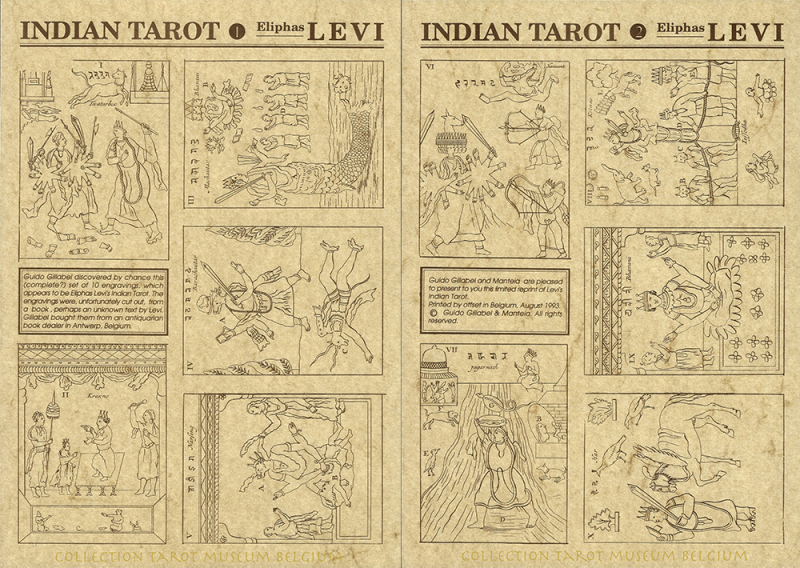Eliphas Lévi Indian Tarot

It must have been around the late 80's - early 90's. I was walking past the display windows of the antique dealers in Antwerp when suddenly my eye fell on 10 cut-out images, numbered from I to X.
I had already seen 5 of those images in Papus's book 'Le Tarot Divinatoire (1909)' and also in the first volume of Stuart Kaplan's Encyclopedia of the Tarot.
I did not find 5 images but 10 (tarot cards ?).

Lévi & Papus
According to Papus (Dr Gerard Encausse), these are images of the “Tarot Indien” created by Eliphas Lévi (Alphonse Louis Constant). They were "bizarre" images to me as a Westerner and the relationship with the tarot seemed a bit strange to me. I am therefore not an expert on Indian religions.

Frank Jensen
During that period I had quite a lot of contact with Frank Jensen. I think Frank had the very first tarot museum in the world and knew many interesting people. Frank Jensen was also the publisher of the famous magazine Manteia of which I was also a contributor. I printed the 10 so-called Indian Tarot cards from Levi as an appendix to Manteia (on nice parchment paper), thinking this was the first time all (?) 10 had been shown.

Frank contacted Thierry Depaulis and Professor Dummet (“The Tarot and the Occult”): Levi's “Tarot If” was not tarot at all as Papus claimed. They were the 10 incarnations of Vishnu. These had appeared in a series of books from 1723 by Bernard Picard: “Cérémonies et Coutumes Religieuses de tous les peuples du monde” (Ceremonies and religious traditions of people all over the world). This series was reprinted in 1783 in an updated version.

What for years was seen as a number of tarot cards turned out to be none.
Later I found another uncut sheet where on image ten is written: Tome VI N° 25 and C. Du Bose Exc. . The 1723 edition consisted of 6 volumes and the 1783 edition of 4 volumes.
The extensive article that Frank wrote about this can be found in Manteia no. 9, page 4, December 1993.
This story makes us aware that we have to be very careful even with very famous people like Papus. Papus is said to have owned part of Lévi's inheritance and thus came to this (hasty ?) conclusion.

The tomb of Papus (father and son) in Père Lachaise, Paris






